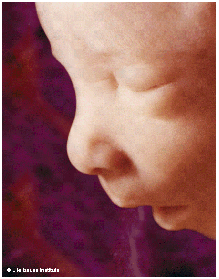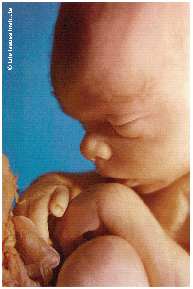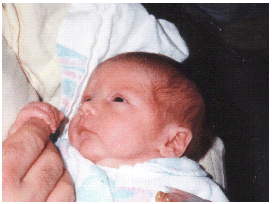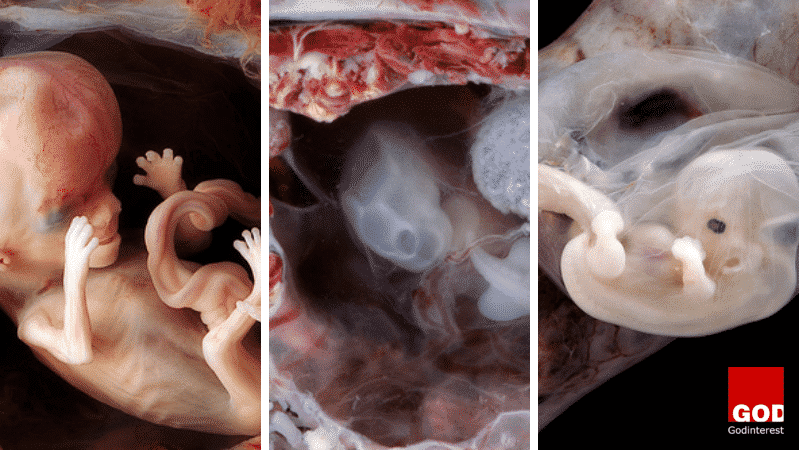Whiles laws governing abortion continue to be debated in many parts of the world, heated conversations around the issue of abortion has increased in recent months as countries have continued to pass “heartbeat bills” and other laws restricting abortions.
Voters in Ireland removed a 35-year-old constitutional ban on abortion, one of the strictest in Europe.
In the United States, the departure of Justice Anthony Kennedyand President Trump’s selection to succeed him is expected to redraw the well-established legal battle lines over abortion rights.
And in Poland, politicians are making a renewed push to restrict abortion.
From relief to regret: Readers’ experiences of abortion
Celebrities around the world have weighed in on the matter through sharing personal antidotal stories of relief to regret rallying for boycotts, and starting movements championing for and against change on social media.
Children’s lives outside the womb matter just as much as those inside. I won’t pretend I’m fully educated on the policy nuances or women’s experiences. I just don’t seem to hear the voices crying against the murder of children inside the womb, that are crying about those outside the womb.
Lecrae Devaughn Moore
Recently, Christian rapper Lecrae Devaughn Moore took to Twitter Social Media to share his conventions about what it means to be pro-life, arguing that children’s lives inside the womb matter just as much as those outside which prompted ‘amens’ and ‘hallelujahs’ in support across Twitter
Lecrae also admitted that he paid for an abortion in the past which went from being a relief to a lifetime of regret. Lacrae also said:
“I found a photo of the girlfriend I asked to abort my baby and I ‘just broke down”.
Lecrae Devaughn Moore
Lecrae’s public message sparked a wide range of responses, both from those who agree and disagree and felt the comment was completely out of line.
In response Lecrae wrote,
“Haven’t seen the same support for the marginalized communities I’ve served in for 15 years. Most of my friends in urban ministry lack support. They are dealing with the families and societal injustices AFTER the kids are born.”
Many were surprised and grateful when they saw the video clip from Passion Life Ministries on January 9th described as “A conversation with Lecrae, John Piper, and John Ensor on the story behind Good, Bad, Ugly, the remorse of abortion, and the healing of the gospel of Christ.
Lecrae is seen by millions as a relevant leader with a voice worth listening to. John Piper and John Ensor are powerful leaders as well. Both Christian ministers have faithfully spoken out against abortion for years.
In the video, Lecrae shares the meaning behind the lyrics of his song “Good, Bad and Ugly,” which shares his personal experience with abortion. Live Action wrote about this song when it was first released. Lecrae goes even deeper in this new video clip, sharing details of the pain he suffered years after the abortion of his child. Lecrae tells of the time he found a picture of his ex-girlfriend, the mother of his aborted child.
NFL tight end Benjamin Watson also joined in on the conversation and said in response to Lecrae’s comment:
here I am bruh “In the womb, outside the womb, conception to grave count me in. Standing for life does not have to be a mutually exclusive event.”
Benjamin Watson


Watson has also been a vocal opponent of abortion and spoke at the 2017 March for Life.
As a husband and father of seven children (two currently in the womb), the NFL star explained that men should “step up and lead,” which could “eradicate” many of the abortions occurring today.
He added that abortion is “the ultimate form of sexism against women.”
“And that’s a challenge to myself, that’s a challenge to all men who are listening, that’s a challenge to men everywhere to step up and be men.
“A lot of the issues that we face in our country, whether it’s the abortion issue, or education, or whatever it may be, sometimes incarceration, whatever it may be, if men were doing their job, these things would be eradicated.
“My message to men is a lot of times, me looking in the mirror and encouraging myself as a father, as a husband, to do what it takes to stand in the gap, to step out, and to lead, because manhood is really falling by the wayside.
“The crazy thing is that abortion itself is really the ultimate form of sexism against women. And if men were standing up doing what they were supposed to do, much of this would be eradicated.”
The battle between life and choice is being fought one story at a time.
Abortion facts:
- Abortion i`s the #1 cause of death for African-Americans. Abortion disproportionally targets minority babies. Whatever the intent of the abortion industry may be, by functional standards, abortion is a racist institution. In the United States, black children are aborted at 5 times the rate of white children and Hispanic children don’t fare much better. Abortion is the leading cause of death among black Americans. We can debate the racial intent of Planned Parenthood past and present, but we cannot debate the results. Abortion is by no means an equal opportunity killer.
- Every new life begins at conception. This is an irrefutable fact of biology. It is true for animals and true for humans. When considered alongside the law of biogenesis — that every species reproduces after its own kind — we can draw only one conclusion in regard to abortion: every single abortion ends the life of an innocent human being.
- Abortion is more dangerous than childbirth. Among the physical risks of abortion are infection, perforation of the uterus, hemorrhage, cervical incompetence, cancer, and even death. Among the psychological risks are depression, nervous disorders, sleep disturbances, sexual dysfunction, alcohol and drug abuse, eating disorders, child neglect or abuse, divorce or chronic relationship problems, and suicide. The Elliot Institute. “Research on the Psychological and Physical Effects of Abortion.” Accessed October 17, 2013.
- The 8 week+ unborn baby feels real physical pain during an abortion. Yes, every abortion kills an innocent human being. Even more alarming is the fact that beginning at the 8th week of development, an unborn baby that is aborted feels pain during the abortion. The baby feels both psychological and real physical, organic pain. Let that sink in. Of course, whether or not abortion is a painful experience to the unborn child being aborted, the child is left no less dead as a result. In talking about the question of fetal pain, we must remember that it ultimately has no bearing on the morality of abortion.
- 70,000 women world-wide die each year from back-street abortions.One in three women in the UK have an abortion in their lifetime.
- Abortion has become a form of gendercide, shrinking the global female population at an alarming rate. On top of the fact that every abortion kills an innocent human being, abortion has also become the driving force in eliminating females around the globe. Estimates put the global gender gap somewhere between 100 and 200 million people. Abortion has become the most effective means of sexism ever devised, ridding the world of multitudes of unwanted females.
- Around 180,000 abortions a year take place in England. About 10,000 are on women from other parts of the UK including Ireland, where it is illegal. 10,000 are performed in Scotland. Source: Abortion Rights, UK
- Women between 20- and 24-years-old are the largest users of abortion services. Source: Abortion Rights, UK
- Since being legalised under the 1967 Abortion Act, on average around one fifth of all pregnancies in the UK have ended in abortion.
- World-wide, around one quarter of pregnancies end in abortion – nearly half are illegal. Source: Abortion Rights, UK
- Almost 90% of abortions take place in the first 12 weeks of pregnancy.
- 76% of adults in the UK are pro-choice. Source: Abortion Rights, UK
- The NHS is not required by law to perform abortions. Source: Abortion Rights, UK
- In England nearly a quarter of women pay for their abortions because NHS services are restricted. Source: Abortion Rights, UK
- Abortion on request is the general rule in most European countries and in the US but not in the UK where the permission of two doctors is required. Source: Abortion Rights, UK
- In a saline abortion, amniotic fluid is removed from the uterus and replaced with a saline solution, which the fetus swallows. The fetus is killed by salt poisoning, dehydration, brain hemorrhage and convulsions. Saline abortions, typically performed in the second and early third trimester, are rarely used today, due to the risk of particularly serious health complications to the woman. Clowes, Brian, PhD. The Facts of Life. Front Royal, VA: Human Life International, 2001.
- Suction aspiration, the most common abortion method, is typically performed at 6-12 weeks gestation, but can be used up to 16 weeks. The cervix is dilated, and a hollow plastic tube with a sharp tip is inserted into the cervix and then into the uterus. An aspirator attached to the tube tears the body of the fetus apart and suctions the pieces through the tube. Willke, John, MD and Barbara Willke. Abortion: Questions & Answers. Cincinnati: Hayes, 2003.
- Since the legalization of abortion in 1973, there have been approximately 56 million abortions performed in the United States.
Guttmacher Institute. “Facts on Induced Abortion in the United States.” July 2013.
Science
* The average length of a full-term pregnancy is 38 weeks. Obstetricians normally use a figure of 40 weeks, but this is actually the time between the first day of the last menstrual period and childbirth. On average, the first day of the last menstrual period occurs 2 weeks before fertilization.[
* The following scientific facts about human development are organized according to the number of weeks since fertilization. The number of weeks after the first day of the last menstrual period (LMP) are shown in parentheses.
Fertilization (2 Weeks Post-LMP)
* Fertilization normally takes place within one day of intercourse but can occur up to six days later.
* At fertilization, the genetic composition of humans is formed.[ This genetic information determines gender, eye color, hair color, and facial features. It also influences characteristics such as intelligence and personality.
* The medical textbook The Developing Human: Clinically Oriented Embryology states that “fertilization” creates “a new combination of chromosomes that is different from that in the cells of either of the parents,” and this “is the beginning of a new human being.”[
* The four defining characteristics of life are present at fertilization:[
- growth
- reproductioN
- metabolism
- response to stimulI
* Genetically speaking, with the exception of identical twins, once a woman conceives a preborn human, the odds against her conceiving the same one again are greater than 10600 to one.[ In comparison, there are roughly 1080 atoms in the known universe.
* Identical twins are biologically unique from each other due to epigenetic differences that affect the expression of their genes.[
3 Weeks After Fertilization (5 Weeks Post-LMP)
* The eyes and spinal cord are visible and the developing brain has two lobes.
4 Weeks After Fertilization (6 Weeks Post-LMP)
* The heart is beating and a circulatory system is in place.[ Specific brain components and internal organs such as the lungs are beginning to develop and can be identified.
7 Weeks After Fertilization (9 Weeks Post-LMP)
* Muscles and nerves begin working together. When the upper lip is tickled, the arms move backwards. The cerebrum has divided into hemispheres.

9 Weeks After Fertilization (11 Weeks Post-LMP)
* More than 90% of the body structures found in a full-grown human are present. The medical classification changes from an embryo to a fetus. This dividing line was chosen by embryologists because from this point forward, most development involves growth in existing body structures instead of the formation of new ones. The preborn human moves body parts without any outside stimulation.
10 Weeks After Fertilization (12 Weeks Post-LMP)
* All parts of the brain and spinal cord are formed. The heart pumps blood to every part of the body. The whole body is sensitive to touch except for portions of the head. The preborn human makes facial expressions.[
11 Weeks After Fertilization (13 Weeks Post-LMP)

12 Weeks After Fertilization (14 Weeks Post-LMP)
* Electrical signals from the nervous system are measurable. After an abortion, efforts to suckle will sometimes be observed.
13 Weeks After Fertilization (15 Weeks Post-LMP)
14 Weeks After Fertilization (16 Weeks Post-LMP)
* The preborn human makes coordinated movements of the arms and legs.[
16 Weeks After Fertilization (18 Weeks Post-LMP)
* The preborn human makes eye movements.[

18 Weeks After Fertilization (20 Weeks Post-LMP)
* The portion of the brain responsible for functions such as reasoning, memory and language (the cerebral cortex) has the same number of nerve cells as a full-grown adult. Pain sensory receptors have spread to all portions of the skin and mucous membranes.[
20 Weeks After Fertilization (22 Weeks Post-LMP)
* The preborn human sleeps, awakes and can hear sounds.[

* For detailed facts about the capacity of humans to feel pain at this stage of development, read Just Facts’ article, “When Do Humans Begin to Feel Pain?”
* Up through approximately this point in time, according to the Supreme Court’s rulings in Roe v. Wade and Planned Parenthood v. Casey, a pregnant woman can abort at will. (More details in the section on Constitution and Law.)
24 Weeks After Fertilization (26 Weeks Post-LMP)
* The blink-startle reflex and taste buds are functional. The preborn human will swallow more amniotic fluid if a sweetener is added to it. The grip is strong enough to hold onto an object that is moving up and down.[ If born and given specialized care, the survival rate is more than 80%.
28 Weeks after Fertilization (30 weeks Post-LMP)
* If exposed to an 85 decibel noise while sleeping (about as loud as a blender), preborn humans exhibit the “motor behaviors that accompany the crying state.”Premature infants born at this time are more sensitive to pain than infants who are born at 38 weeks, and infants who are born at 38 weeks are more sensitive to pain than infants at 3—12 months after birth.[
* If born and given specialized care, the survival rate is more than 95%.[
32 Weeks After Fertilization (34 Weeks Post-LMP)

(Premature infant 3 days after birth)
38 Weeks After Fertilization (40 Weeks Post-LMP)
* Average point in time when humans are born. At birth, the medical classification changes from a fetus to a neonate.[
* At any point prior to birth, according to the Supreme Court’s rulings in Roe v. Wade, Doe v. Bolton, and Planned Parenthood v. Casey, a pregnant woman can abort to preserve her “health.” One example from Roe v. Wade of what may be considered harmful to a mother’s health is the work of caring for a child. (More details in the section on Constitution and Law.)




